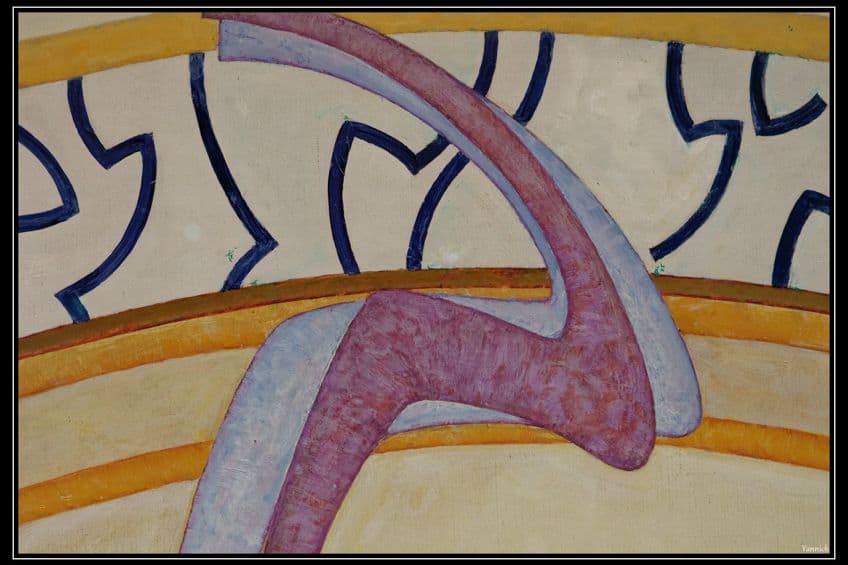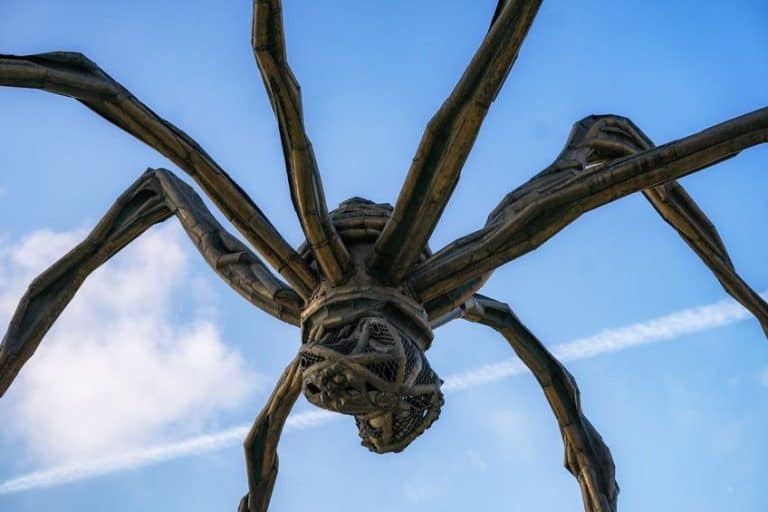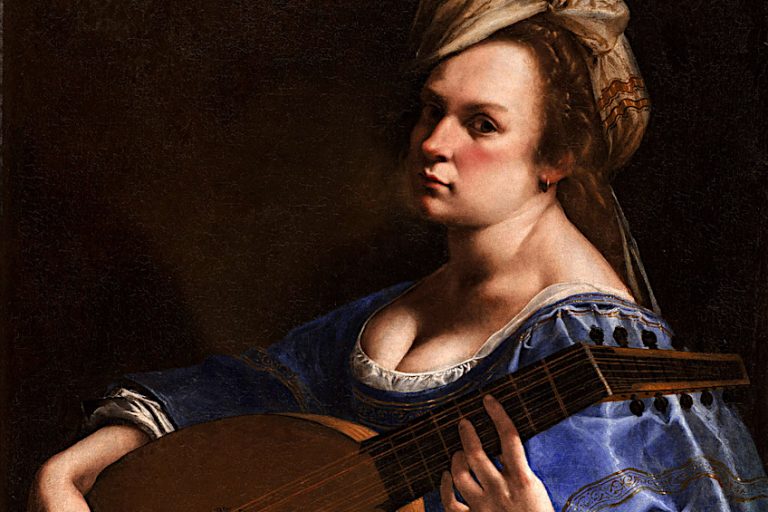František Kupka – A Famous Abstract Czech Painter
František Kupka was a pioneering Czech painter and graphic artist, whose work significantly contributed to the development of abstract art in the early 20th century. Initially influenced by Symbolism and Impressionism, Kupka’s artistic journey led him to explore and ultimately embrace abstraction, making him one of its early proponents. His fascination with color theory, motion, and the metaphysical aspects of art culminated in groundbreaking works that challenged traditional artistic boundaries. Kupka’s innovative approach is epitomized in pieces such as Amorpha: Fugue in Two Colors (1912), where he deftly employed bold, non-representational forms and vibrant hues to evoke emotion and convey profound philosophical ideas. His legacy as a forerunner of modern art continues to inspire and captivate audiences worldwide.
Key Takeaways
- Kupka pioneered abstract art and Orphism.
- He created notable works like Disks of Newton and Fugue in Red and Blue.
- His legacy influenced modern art and philosophy.
Life and Education of František Kupka
| Birth | September 23, 1871 |
|---|---|
| Death | June 24, 1957 |
| Place of Birth | Opočno, Austria-Hungary (now in the Czech Republic) |
| Genre of Work | Abstract art, Cubism, and Orphism |
František Kupka was a trailblazer in the world of abstract art, notable for his role in pioneering Orphism and steering modern art towards non-representational forms. Born on September 23, 1871, in Bohemia (now the Czech Republic), Kupka’s exploration of color, form, and spirituality set him apart from his contemporaries. His innovative approach and expressive use of color engaged viewers and challenged traditional artistic boundaries.

Throughout his career, Kupka’s works evolved from realistic to purely abstract styles. His influence extended beyond just painting; he also contributed significantly to graphic art. Kupka’s works such as Disks of Newton and Fugue in Red and Blue highlight his interest in the interplay between music, movement, and visual art. Artists and critics have long admired his ability to transcend conventional artistic norms and create pieces that resonate with both intellectual and emotional depth.
Kupka’s legacy is evident in how he shaped the abstract art movement, influencing subsequent generations of artists. His commitment to exploring new artistic expressions left an indelible mark on modern art and philosophy. His art not only pushed the boundaries of creativity but also invited viewers into a deeper reflection on the intersections of color, form, and meaning.
Early Career and Realism
František Kupka began his artistic education at the Academy of Fine Arts in Prague from 1889 to 1892. During this period, he focused on painting historical and patriotic themes. He then moved to Vienna, where he studied at the Academy of Fine Arts. In Vienna, Kupka worked on symbolic and allegorical subjects, paintings that reflected deep philosophical ideas.
Kupka’s early work included figurative and realistic styles, which he later transitioned away from as his artistic vision evolved.
Mature Period
Kupka relocated to Paris in 1896, marking a significant shift in his career. He enrolled at the esteemed Académie Julian and the école des Beaux-Arts, where he encountered new artistic movements. In Paris, Kupka’s style began to evolve. By 1910, he was moving towards abstract art, influenced by his interest in modern scientific theories and theosophy. His works during this period laid the groundwork for the development of Orphic Cubism (Orphism), a movement he co-founded. Kupka’s notable abstract works include Amorpha: Fugue in Two Colors (1912), which represented a crucial step in the evolution of purely abstract painting.

Later Years and Legacy
In the later years of his life, Kupka continued to innovate and experiment. He remained active in Paris and became a prominent figure in the avant-garde art scene in Europe. His influence extended beyond his own works as he shaped the direction of modern abstract art. Kupka’s ideas and creations inspired many future generations of artists. Kupka’s works were exhibited internationally, including significant exhibitions in New York.
His contributions helped establish abstract art as a major movement in the 20th century.
Death
František Kupka passed away on June 24, 1957, in Puteaux, France. He left behind a substantial legacy in the art world. His death marked the end of an era but his impact on abstract art continues to be felt. Kupka’s artwork remains celebrated in museums and galleries worldwide, solidifying his place as a key figure in the history of modern art.
Artistic Development and Influences
František Kupka’s journey from realism to pure abstract art marks a significant transformation influenced by his interests in music, philosophy, and modern artistic movements.

Artistic Accomplishments
Kupka began his career with works rooted in realism. Early on, he produced satirical drawings and symbolic subjects, reflecting his initial influences. He also worked as a graphic artist, contributing to various publications. Kupka’s involvement with The Museum of Modern Art and exhibits such as the Salon d’Automne and the Salon des Réalités Nouvelles showcased his growing influence in the art world. As his style evolved, he shifted towards abstract art, becoming a major figure in the abstract art movement.
His works, such as Amorpha, demonstrate a departure from concrete forms to explore color, form, and line.
Transition to Abstraction and Orphism
Kupka’s transition to abstraction was gradual and marked by his exposure to various influences. His interaction with Robert Delaunay and Guillaume Apollinaire, key figures in Orphism, shaped his approach to abstract art. Kupka incorporated musicality and theosophy into his art, exploring ideas of creation in the plastic arts. Works like Disks of Newton and Creation in the Plastic Arts highlight his focus on color and form. Kupka’s engagement with the Puteaux Group and the Section d’Or further solidified his shift towards Orphic Cubism and pure abstraction. In these works, he moved away from realism, embracing abstract forms and the dynamic interplay of colors, lines, and shapes.

Notable Artwork by František Kupka
František Kupka was a key figure in the development of abstract art and Orphic Cubism. His major works and exhibitions significantly impacted modern art, from his early realistic works to his later abstract pieces.
- Amorpha: Fugue in Two Colors (1912): This painting is one of Kupka’s first major abstract works. Exhibited at the Salon d’Automne in Paris, it features vibrant colors and dynamic forms, reflecting his interest in music and movement. The use of swirling patterns helped establish his reputation in abstract art.
- Localization of Graphic Motifs II (1912 – 1913): Kupka explored the relationship between shapes and colors in this piece. The geometric forms and bold colors showcase his transition from realism to abstraction. This work emphasized the visual rhythm and balance that came to define much of his later work.
- Planes by Colors (Plans Par Couleurs) (1930): A notable example of Kupka’s mature abstract style, this painting uses intersecting planes of color to create a sense of depth and space. It was featured in significant exhibitions, solidifying Kupka’s role in the abstract movement.
- Exhibitions: Kupka’s works were showcased in various important exhibitions throughout his career. Major venues include the Salon des Indépendants and the Salon d’Automne in Paris. His participation in these exhibitions played a crucial role in the acceptance and spread of abstract art in Europe.
Impact on Modern Art and Philosophy
František Kupka was a key figure in 20th-century art. His contributions to abstract art, influences from theosophy, and collaborations with other artists greatly shaped modernism.

Contribution to Abstract Art
František Kupka is recognized as one of the pioneers of pure abstract art. He moved away from figurative forms to focus on abstraction around 1910. His work, Disks of Newton (Study for Fugue in Two Colors), is a vital example, showcasing his approach to color and geometric shapes. Kupka’s early training in realism provided a foundation that he skillfully abstracted, allowing him to capture the essence of his subjects with minimal forms.
This transition influenced the abstract art movement significantly, paving the way for future artists such as Kandinsky and Mondrian.
Influence of Theosophy and Philosophy
Kupka’s work was deeply influenced by theosophy, Eastern philosophy, and spiritualism. Theosophy’s exploration of the spiritual and metaphysical aspects of the universe can be seen in Kupka’s abstract compositions. He incorporated elements of the occult and esoteric beliefs in his art, which sought to represent the unseen forces of the universe. This spiritual quest led Kupka to create works that transcend the physical world, aiming to portray the underlying spiritual reality. His approach mirrored the ideas of how art could convey deeper spiritual truths, often aligning with the theosophical emphasis on color and form as universal languages.

Associations and Collaborations
Kupka’s move to Paris brought him into contact with many influential artists. He collaborated with figures like Robert Delaunay and the Duchamp-Villon brothers. Together, they explored Orphism, a style focusing on lyrical abstraction influenced by light and color. Kupka also worked with Alphonse Mucha, whose Art Nouveau style left a lasting impact on him.
These associations enriched his methods and ideas, and his interactions with these artists fostered a collaborative environment that encouraged innovation and experimentation in abstract art.
Legacy of František Kupka
Kupka’s legacy is vast and enduring. He left behind a rich body of work that continues to inspire and challenge modern art. His experiments with abstract forms and colors broke new ground, allowing future artists to explore abstraction in new ways. Kupka’s influence is evident in various movements that followed, including Fauvism and Symbolism. His pioneering roles in both modernism and abstract art marked him as a critical figure whose ideas on form, color, and spiritualism continue to resonate. His contributions laid the groundwork for a century of artistic exploration, making him a central figure in understanding the development of modern art and its philosophical underpinnings.

František Kupka’s artistic legacy endures as a testament to his innovative spirit and profound influence on the development of abstract art. Through his exploration of color, form, and metaphysical concepts, Kupka not only pushed the boundaries of traditional artistic expression but also laid the foundation for future generations of abstract artists. His ability to convey complex ideas and emotions through non-representational means remains a source of inspiration and fascination for art enthusiasts and scholars alike. Kupka’s enduring legacy serves as a reminder of the power of art to transcend conventional norms and ignite a sense of wonder and introspection in viewers, solidifying his place as a true visionary in the history of modern art.
Frequently Asked Questions
What Are the Characteristics of František Kupka’s Abstract Art Style?
Kupka’s abstract art often uses bold, vibrant colors and rhythmic forms. His works are characterized by their departure from realistic elements. Instead, he focused on the emotional and spiritual impact of colors and shapes. His paintings often illustrate a sense of movement and dynamism, reflecting cosmic forces.
How Did František Kupka Contribute to the Development of Orphism?
Kupka co-founded the Orphism movement with other artists. Orphism emphasizes the use of colour and light to create a sense of rhythm and harmony. His artwork moved beyond traditional forms to explore the spiritual and meditative qualities of abstract compositions. Kupka’s innovative use of color and form helped shape the philosophies of Orphism.
How Do František Kupka’s Early Works Differ from His Later Abstract Paintings?
In his early career, Kupka’s work was rooted in realism. He created detailed and representational pieces, often drawing from everyday life. Later, he transitioned to pure abstract art. His later paintings show a clear evolution as they become more focused on color, shape, and the spiritual experience of art.
Isabella studied at the University of Cape Town in South Africa and graduated with a Bachelor of Arts majoring in English Literature & Language and Psychology. Throughout her undergraduate years, she took Art History as an additional subject and absolutely loved it. Building on from her art history knowledge that began in high school, art has always been a particular area of fascination for her. From learning about artworks previously unknown to her, or sharpening her existing understanding of specific works, the ability to continue learning within this interesting sphere excites her greatly.
Her focal points of interest in art history encompass profiling specific artists and art movements, as it is these areas where she is able to really dig deep into the rich narrative of the art world. Additionally, she particularly enjoys exploring the different artistic styles of the 20th century, as well as the important impact that female artists have had on the development of art history.
Learn more about Isabella Meyer and the Art in Context Team.
Cite this Article
Isabella, Meyer, “František Kupka – A Famous Abstract Czech Painter.” Art in Context. July 17, 2024. URL: https://artincontext.org/frantisek-kupka/
Meyer, I. (2024, 17 July). František Kupka – A Famous Abstract Czech Painter. Art in Context. https://artincontext.org/frantisek-kupka/
Meyer, Isabella. “František Kupka – A Famous Abstract Czech Painter.” Art in Context, July 17, 2024. https://artincontext.org/frantisek-kupka/.












Hello,
I have a book/diary called Couplets that I suspect belonged to Franz Kupka (unless it’s a coincidence). How can I find out if it’s real? I can possibly send you pictures. Thanks in advance!
That sounds like an amazing find — Franz Kupka was a pioneer in abstract art, so if your book is really connected to him, it could be very valuable and historically significant. Here’s how you can start verifying its authenticity:
Photograph & Document It Clearly
Take clear photos of the cover, any handwritten notes or signatures, title pages, and any artwork or markings inside.
If there’s handwriting, a signature, or sketches, these could be important clues.
Compare with Known Examples
Look up examples of František Kupka’s signature or handwriting online (from museums, auction houses, or archives).
Compare them to what’s in your book.
Look for Provenance
Are there any dates, locations, names, or stamps in the diary?
These clues could help trace ownership or link it to Kupka’s life (e.g., his time in Paris, involvement with Orphism, etc.).